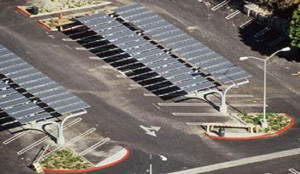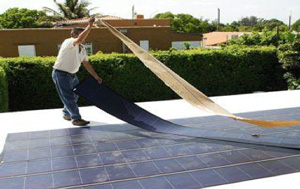
Frequently Asked Questions
-
Q: What is an ESCO? How does the financing work with respect to the ESCO's?
-
Q: What is a Power Purchase Agreement (PPA)?
-
Q. How does a PPA work?
-
Q. How does Beezley Energy Advisors get compensated for their services?
-
Q: What happens if the panels get damaged/vandalized?
-
Q: What do the solar canopies look like?
-
Q: Who owns the equipment after the PPA term?
-
Q: What is the size of the solar panels?
-
Q: What is the life span of the equipment?
-
Q: What if technology improves during our PPA term - will equipment be switched out?
-
Q: What is thin film?
-
Q: What is a solar cell?
-
Q: What is crystalline?
-
Q: What is the percentage of efficiency for solar panels?
-
Q: How much do the panels weigh?
-
Q: Is thin film as efficient as solar panels?
-
Q: What does thin film look like?
-
Q: What if one of the location's moves / relocates - can the equipment relocate?
-
Q: Does the price of the project include all equipment?
-
Q: What is the time frame from procurement to development to commissioning?
-
Q: Should we wait for newer technology to be developed before moving forward?
-
Q: What incentives/rebates are we eligible for?
Section 1603 Renewable Energy Grants. Projects initiated in 2011 receive 30 percent cash payment from the Treasury no more than 60 days following solar energy system activation.
Accelerated depreciation + bonus depreciation (2010-2012). A 100% bonus depreciation is available for 2011; in 2012, the bonus portion of the accelerated depreciation schedule goes to 50%.
Under U.S. Code Title 26 (Section 48(a)(3)), the federal government extends a corporate tax credit to businesses that invest in renewable power. The types of eligible solar technologies include: solar water heat systems, solar space heat, solar thermal electric, solar thermal process heat and photovoltaics (PV). The credit -- or grant (see above) -- is fixed at 30 percent. Note that the credit is not constrained by a dollar-value cap. So regardless of whether you install a $100,000 system or a $1 million system, the PPA provider is permitted to take a 30 percent credit. In October 2008 Congress voted to extend the ITC for eight years, through 2016. When it comes to calculating the depreciation on a commercial solar-energy system, the "tax depreciation basis" is a distinct value from the "tax credit basis." Essentially, you don't get to count the full 30- percent credit when determining the value to depreciate--or mark down--in the first year. If this were the case, a system costing $100,000 would be depreciated down starting from $70,000 ($100K - 30% credit). For legitimate reasons, the IRS has decided that counting the full value of the credit alongside accelerated depreciation would provide too much incentive.
Reasonably enough, rules do allow companies to apply half the value of the tax credit when determining the basis on which to calculate depreciation. As such, the tax depreciation basis that the provider claims for the solar energy system is reduced by 50 percent of the tax credit amount. For example, Provider A installs a commercial solar-electric system costing $100,000. The company's tax depreciation basis will be equal to project costs minus half the allowable credit: $100,000 - (50% x $30,000) = $85,000.
-
Q: What happens in the summer time when sun is out and demand is lowest?
-
Q: What if we sell a property that has the solar canopies on it? Is it worth more?
-
Q: Is there a benefit to purchasing the equipment outright vs. a PPA?
Because the project effectively benefits from the both low-cost, tax exempt debt financing and the private sector tax benefits generated by the project, the effective cost of power to the site host can be significantly lower than under other financing options. In addition, as with a normal PPA /service contract, the pre-paid contract may include a site host purchase option exercisable at some point after the project's sixth year, when the tax benefits have been exhausted.
A tax exempt entity may have the ability to finance a PV project on its balance sheet, using reserves or working capital. Internal financing calls for improvements which would be made by direct allocation of revenues from the entity's currently available operating or capital funds. Allocations are usually made for specific projects as a part of an organizations annual budgeting process.
This may be the only direct ownership option available to tax-exempt entities that lack bonding authority e.g. non-governmental, non-profit entities. Typically, this finance structure faces an up-front expenditure and a steep learning curve as a non-core business skill and leaves the entity with technology and performance risk. As important, the entity is unable to benefit from the federal tax benefits generated by the project. As a result, other financial options prove to be more advantageous.
-
Q: After the term of the PPA is completed, how do we maintain the panels? Is there a firm we can contract with to maintain them or how do we train our facilities and maintenance team members?

